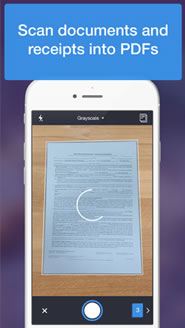 For many people, when they sell a home they don’t even consider taxes. But over time, especially if you live in a relatively expensive area, more and more people will bump up against the federal capital gains exclusions of $250,000 for individuals and $500,000 for couples. (You must have lived in the home for at least two out of the five years before the sale.)
For many people, when they sell a home they don’t even consider taxes. But over time, especially if you live in a relatively expensive area, more and more people will bump up against the federal capital gains exclusions of $250,000 for individuals and $500,000 for couples. (You must have lived in the home for at least two out of the five years before the sale.)
This NY Times article projects that the following share of homeowners in certain high-cost cities will exceed the 250k/500k limits within the next 10 years, assuming just 3.5% annual growth and no further improvements. (Also consider the uncomfortable idea that you really can’t know if you’ll be single or married when it comes time to sell your home.)

Most importantly, the article provides a good reminder to save all of your home-related receipts because they can raise your cost basis and thus reduce any potential capital gains. It’s so easy, and those little pieces of paper can literally be worth thousands of dollars down the road when the tax bill hits.
In general, you should save all of your home repair and remodeling receipts, although things considered maintenance won’t count (painting, fixing leaks, patching cracks, etc.). Here are a bunch of things taken from IRS Pub 523, Selling Your Home. Don’t take this as specific tax advice, but instead as a potential reminder in case you have done something on this list but don’t have the receipts properly stored away and archived.
Home Acquisition and Closing Costs.
- Charges for installing utility services, legal fees for preparing the sales contract, title search fees, recording fees, survey fees, transfer or stamp taxes, and owner’s title insurance.
Home Improvements
- Additions. Bedrooms, bathrooms, garages, decks, patios.
- Exterior. New roof, siding, satellite dish, storm windows.
- Interior. Built-in appliances, kitchen modernization, flooring, wall-to-wall carpeting, fireplace.
- Lawns and grounds. New driveways, landscaping, fences, retaining walls, sprinkler system, swimming pools.
- Systems. Heating, air conditioning, furnace, duct work, air/water filtration, security system.
- Plumbing. Septic, water heater, water softener, water filtration.
- Insulation. Attic, walls, floors, pipes, ductwork.
Physical receipts can get lost or fade over time, but the IRS accepts electronic records so it is quite easy to make a PDF using either your home scanner or just your smartphone. I use the well-reviewed Scanner Pro app and am impressed by its quality, but there are many competitors out there that I haven’t tried. You can then save to a cloud service like Dropbox or Evernote, or simply e-mail them to a searchable gmail account as another form of backup.
 The Best Credit Card Bonus Offers – 2025
The Best Credit Card Bonus Offers – 2025 Big List of Free Stocks from Brokerage Apps
Big List of Free Stocks from Brokerage Apps Best Interest Rates on Cash - 2025
Best Interest Rates on Cash - 2025 Free Credit Scores x 3 + Free Credit Monitoring
Free Credit Scores x 3 + Free Credit Monitoring Best No Fee 0% APR Balance Transfer Offers
Best No Fee 0% APR Balance Transfer Offers Little-Known Cellular Data Plans That Can Save Big Money
Little-Known Cellular Data Plans That Can Save Big Money How To Haggle Your Cable or Direct TV Bill
How To Haggle Your Cable or Direct TV Bill Big List of Free Consumer Data Reports (Credit, Rent, Work)
Big List of Free Consumer Data Reports (Credit, Rent, Work)
Great tips here. It’s so important when making improvements on your home to keep track of those expenses – your home is an investment, after all! Thanks for sharing your thoughts!